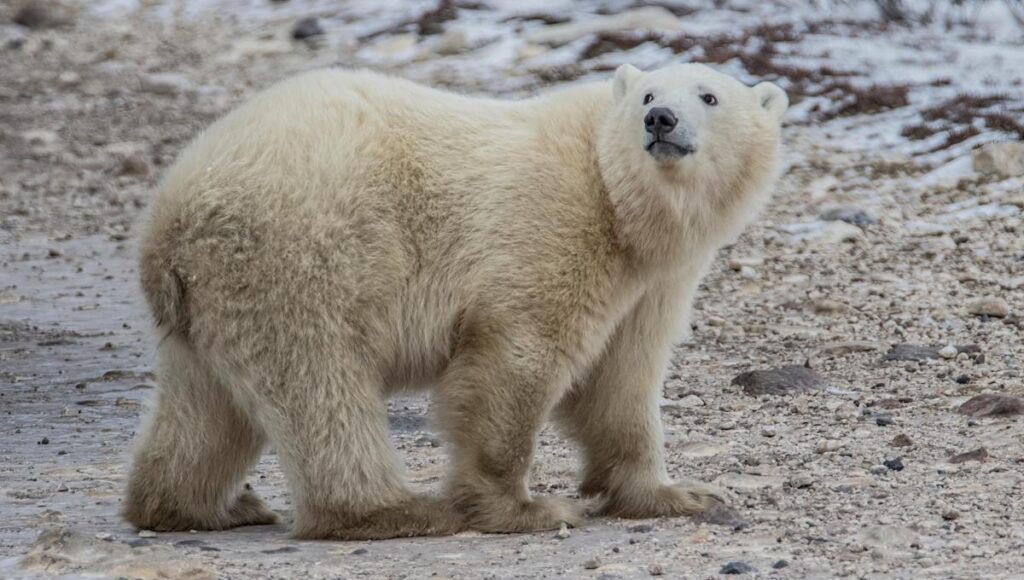A powerful photo series showing polar bears wandering through abandoned buildings on a remote Russian island has captured the world’s attention — but experts say it’s not just an eerie snapshot. It’s a warning sign.
As sea ice continues to shrink, polar bears are adapting in unexpected and troubling ways, and their growing presence on land could put both wildlife and people at risk.
What’s happening?
Wildlife photographer Dmitry Kokh was seeking shelter from a storm in far northeast Russia in 2021 when he spotted something strange on the deserted island of Kolyuchin — polar bears. Nearly 20 of them roamed the ruins of a long-abandoned Soviet weather station, with some even peeking out of the windows.
“We were super surprised because we never expected to meet polar bears so far to the south,” Kokh told the BBC in a new report this month.
The image, titled “House of Bears,” went on to win the Wildlife Photographer of the Year award. But while the pictures are visually striking, researchers say this behavior is a growing — and potentially more dangerous — trend.
Polar bears are spending more time on land, often close to human settlements. And it’s not out of curiosity, as the BBC detailed, but hunger.
Watch now: This simple device could save thousands of animals
Why is this concerning?
Polar bears rely on sea ice to hunt seals, their main source of food. But with rising temperatures melting ice earlier each year, they’re left with fewer options. Some have begun scavenging land-based food sources, including open dumps near northern towns.
Wildlife scientist Tom Smith notes that while bears don’t see humans as prey, encounters are becoming more common — and potentially more threatening. Hungry bears accustomed to garbage may start wandering into villages, damaging property, or in rare cases, attacking people.
“They’re curious animals so we see them in structures often, or they will be climbing on top of cars or pipelines,” Smith said.
On land, the bears burn through fat reserves quickly and can’t get the nutrients they need. Research shows their health, reproductive success, and long-term survival are all at risk if this shift continues.
What’s being done about it?
Experts like Smith are urging governments to fund better waste management in Arctic villages, where open garbage dumps are drawing hungry polar bears closer to people.
“It’s extremely expensive. They need help,” Smith said.
Some Arctic communities have already started securing waste with bear-proof bins and enclosed landfills. In a town in Manitoba, Canada, called Churchill, closing an open dump helped reduce conflicts with bears. Experts also advocate for wider use of deterrents like bear spray and increased public education.
Long-term solutions will depend on slowing the planet’s overheating and preserving sea ice. Supporting clean energy, reducing single-use plastics, and backing conservation groups like Polar Bears International are all small steps individuals can take.
Kokh’s haunting images may be art — but they also tell a deeper dystopian story. One where polar bears are adapting to a world they were never built to survive in.
Join our free newsletter for good news and useful tips, and don’t miss this cool list of easy ways to help yourself while helping the planet.
Read the full article here
